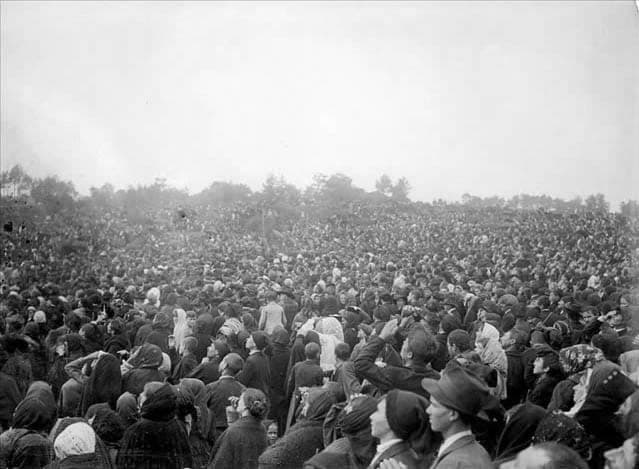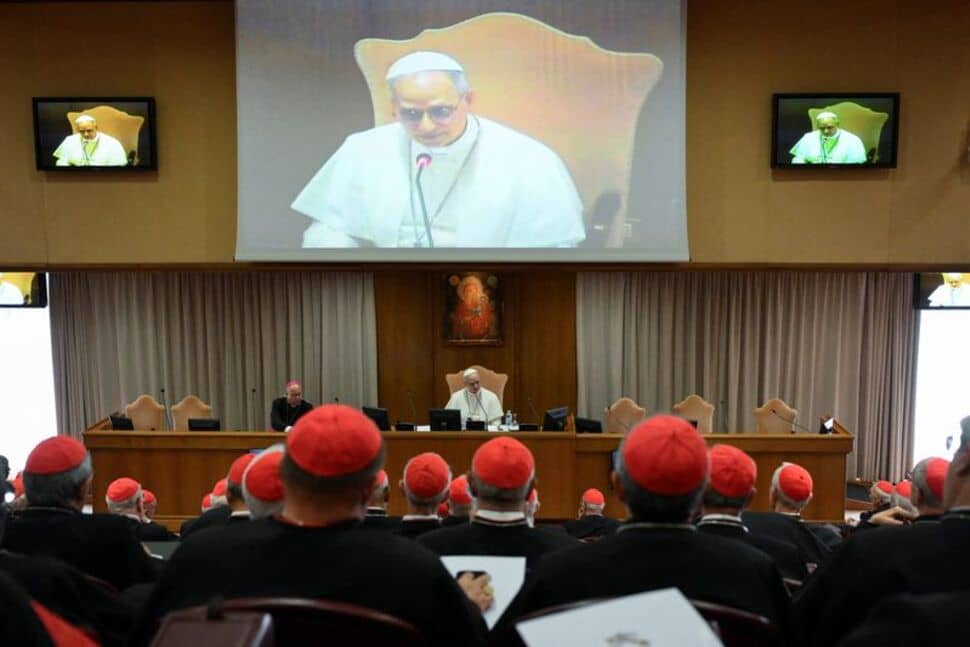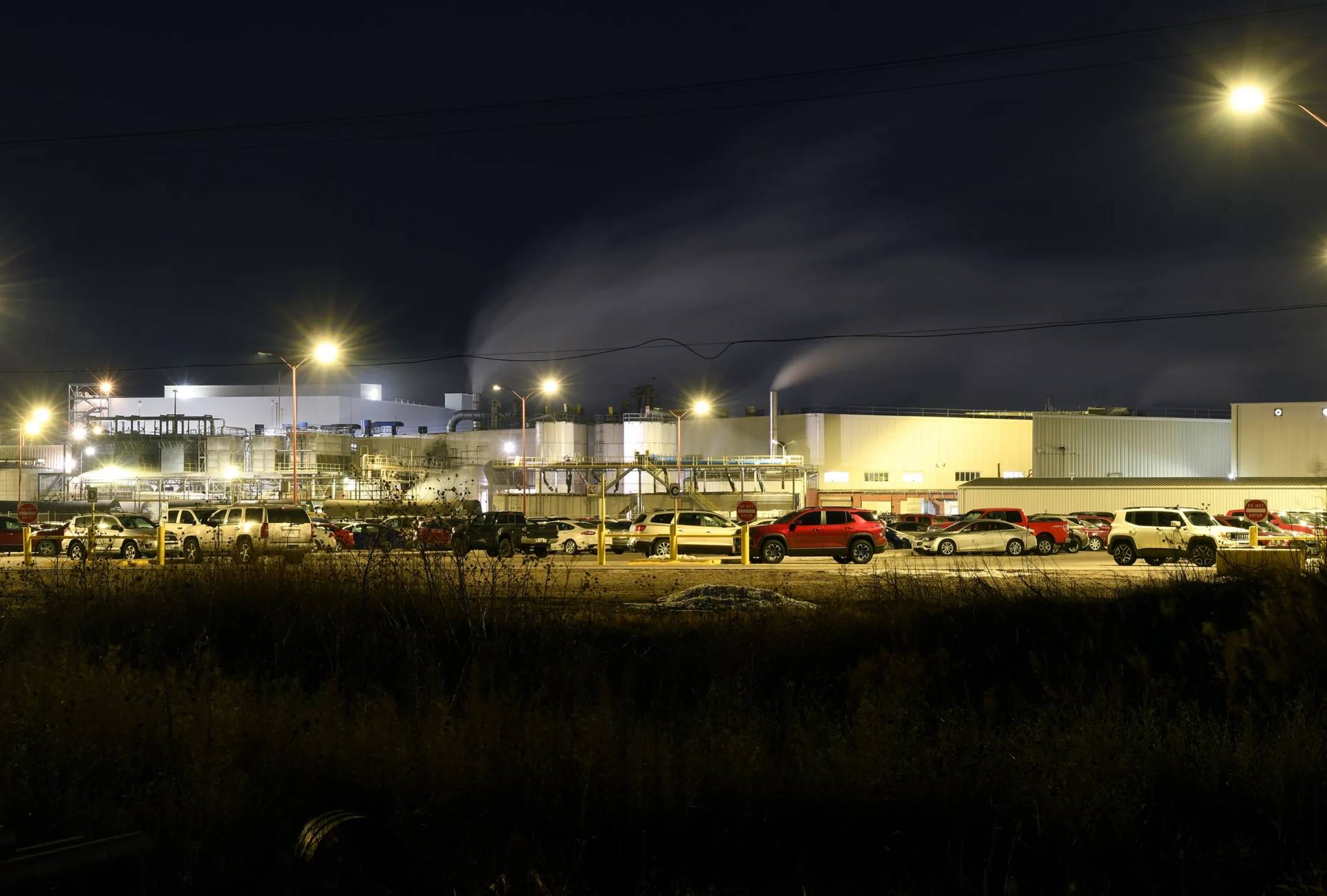Atheists love to mock miracles, and the miracle of the sun at Fatima is one of their favorite objects of derision.
The high priest of the atheists, Richard Dawkins dismisses the miracle of the sun as a mass hallucination.
He writes in The God Delusion:
“On the face of it, mass visions, such as the report that seventy thousand pilgrims at Fatima in Portugal in 1917 saw the sun ‘tear itself from the heavens and come crashing down upon the multitude,’ are harder to write off…It is not easy to explain how seventy thousand people could share the same hallucination. But it is even harder to accept that it really happened without the rest of the world, outside Fatima, seeing it too — and not just seeing it, but feeling it as the catastrophic destruction of the solar system, including acceleration forces sufficient to hurl everybody into space. Obviously the sun did not dance and plunge to the earth. We know the sun is billions of times bigger than the earth. If the sun plunged to the earth there would be no earth. Clearly there was no miracle of the sun at Fatima…”
Dawkins is relying on the Scottish philosopher David Hume’s pithy test for a miracle. Hume wrote, “No testimony is sufficient to establish a miracle, unless the testimony be of such a kind, that its falsehood would be more miraculous than the fact which it endeavors to establish.”
Hume’s test applied to Fatima would be to observe that it is very improbable that 70,000 people could simultaneously be deluded, or simultaneously collude in a mass lie. It is also very improbable that 70,000 people experienced the same hallucination.
However, all of those improbabilities are far more probable than the alternative: That the Sun was suddenly yanked sideways in its orbit, spun around and crashed to the Earth destroying the balance of the whole solar system with nobody outside Fatima noticing.
This is typical of the dull literalistic “reasoning” of the atheists. We who believe in the miracle of the sun have also taken science classes. We do understand that the sun is much bigger than the earth.
We also know that if the sun were really spinning that everyone on earth should be able to see it. We also know that if the sun plunged to earth we would all be toast.
Yet we believe in the miracle of the sun.
Scientists are supposed to objectively and rationally examine the evidence. At Fatima we have documentary, eyewitness, and photographic evidence that 70,000 people ‘saw’ the sun spin, felt it was yanked from the sky and that it plunged to earth.
Everyone said they saw the same thing. Everyone was so frightened they screamed and ran for their lives. Clearly something happened, what was it?
Obviously the sun didn’t literally fall to the earth. But 70,000 people saw it fall to the earth. The miracle therefore occurred somewhere within the process of perception.
We see with our eyes, but what do we see? Whatever we see is transferred to the brain and the brain interprets what we see. It is well known that if we do not have the mental capacity to “see” certain things they are invisible to us.
Likewise we may “see” certain things, and without the capacity or mental vocabulary to process what we have seen they will remain a mystery to us, for we all process what we see in terms of what we know.
Therefore do we conclude that the miracle of the sun at Fatima was a miracle that occurred within the minds of 70,000 witnesses.
Does this mean “It was only in their mind?” Or that “They had merely imagined it”? How did they all imagine the same thing? Was that the miracle? Did the event manipulate their minds and powers of perception in some way? Was it therefore a very unusual kind of mass hallucination?
No. They really did see the sun spinning, being yanked from the sky and plunging to earth, but the way they “saw” it was with some other capability than the usual kind of ‘seeing.’ They “saw” something in the same way that the visionaries “see” the Blessed Virgin who is not there in a normally physical way. Yet, the visionaries report that the characters they “see” seem to be physical and solid.
The seeming reality of what they see means this was not an ordinary hallucination. Furthermore, the miracle could not only have taken place within the perception of the witnesses because the phenomena was witnessed elsewhere.
Marian researcher Donal Foley records, that the poet Alfonso Lopes Vieira who lived over 30 miles away from Fatima witnessed the phenomenon. He wrote, “On that day, 13th October, 1917, without remembering the predictions of the children, I was enchanted by a remarkable spectacle in the sky of a kind I had never seen before.”
Foley tells the story of a young boy, Inacio Lourenco, who was a schoolchild of nine when he saw the miracle at a village about 12 miles from Fatima. He described how the children and their teachers were attracted outside by a commotion in front of the school to see the miracle of the sun. He tells of how he could look at the sun, which looked like “a ball of snow revolving on itself,” before it suddenly came down in a zigzag toward the Earth.
As he says, “During those long moments of the solar prodigy objects around us turned all the colors of the rainbow. We saw ourselves blue, yellow, red, etc. All these strange phenomena increased the fear of the people. After about ten minutes the sun, now dull and pallid, returned to its place. When the people realized that the danger was now over there was an explosion of joy and everyone joined in thanksgiving and praise of our Lady.”
The miracle was also seen by sailors on a British ship off the coast of Portugal. Foley recounts an experience in England. He gave a presentation on Fatima at a college in England and was told by one of the teachers that her grandfather saw the miracle from his ship and wrote about it to his wife — “without obviously understanding what it meant or its significance.”
And finally, what most convincingly shows that the miracle was not only in the minds and perception of the witnesses is the fact that the crowd at Fatima felt the heat of the sun as it approached them, and their clothes and the ground — which had been soaked by torrential rain — were dry at the end of the miracle.
Believers and atheists agree that the sun did not literally and physically crash to earth. Some atheists will continue to propose a mass hallucination. Others are honest enough to be mystified by the events at Fatima, and admit that it was some sort of psychic phenomena for which we do not yet have an explanation.
Believers will ask, “Why not accept the most obvious explanation: A power greater than nature interrupted the natural order. The term for a power greater than nature is God, and the term for such an interruption is ‘miracle’.”

















